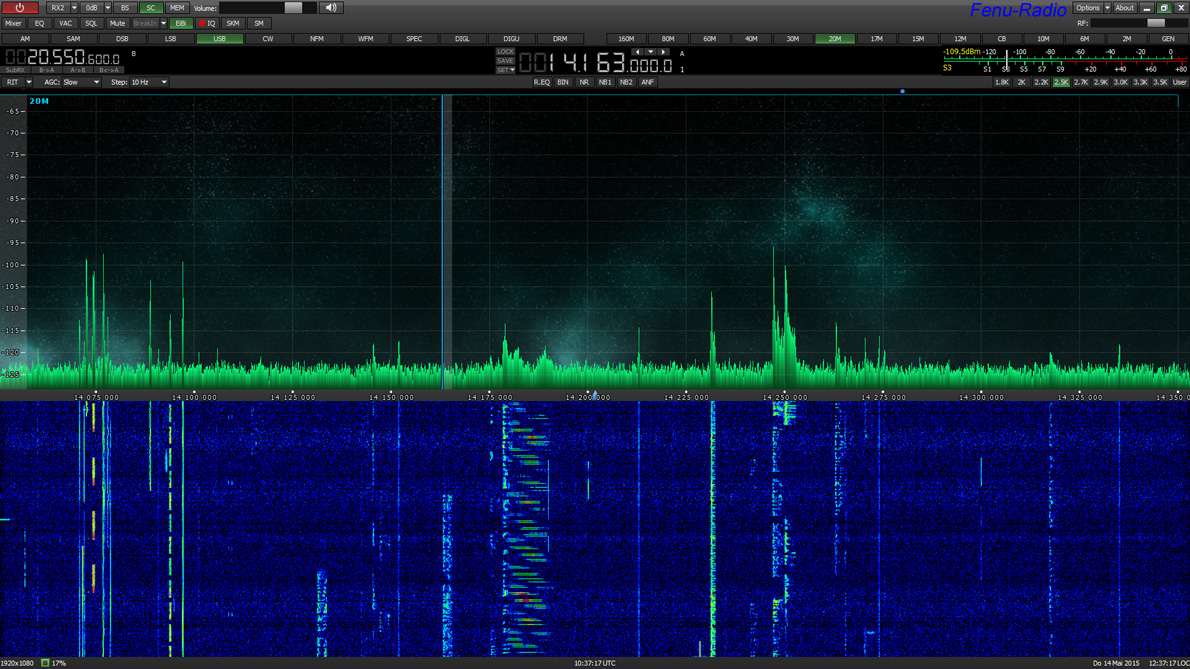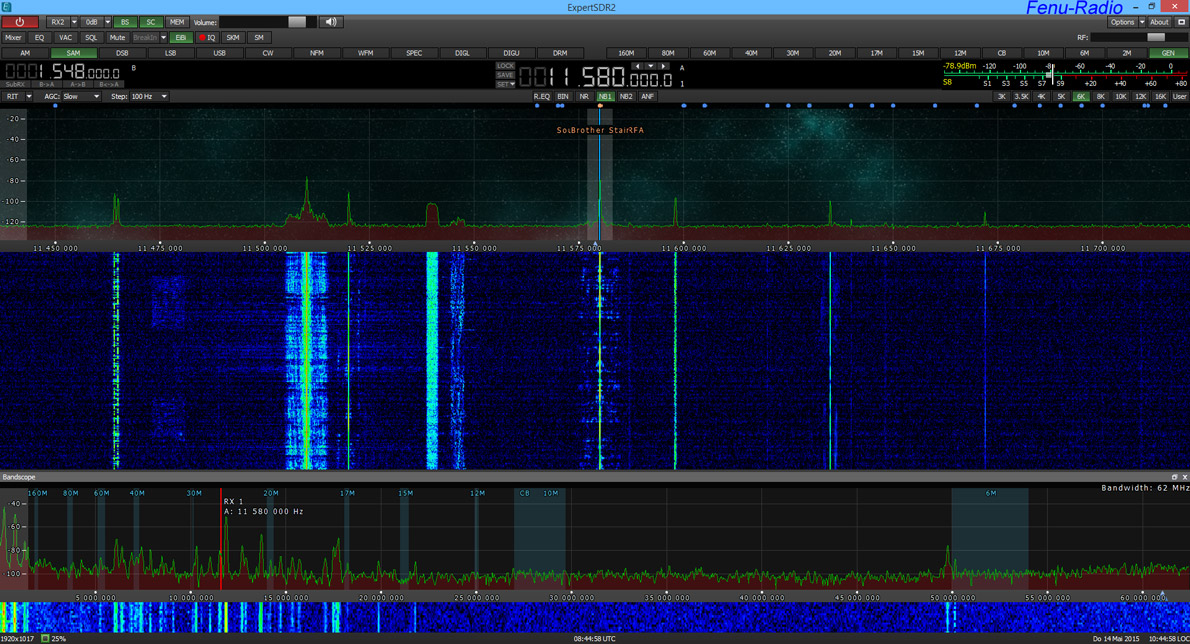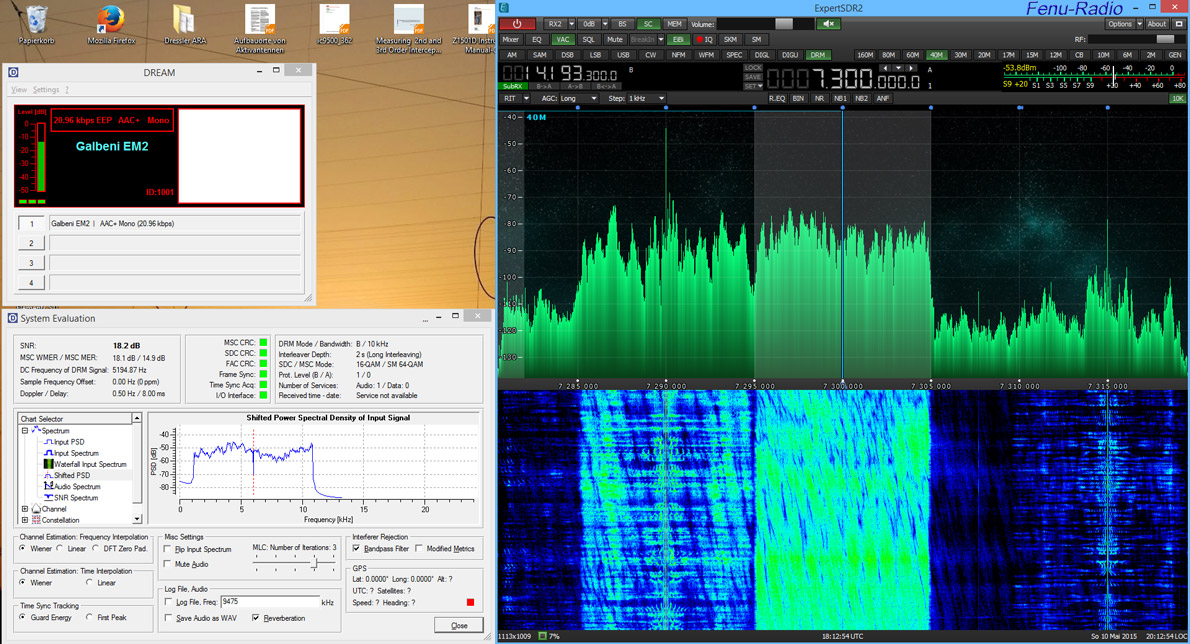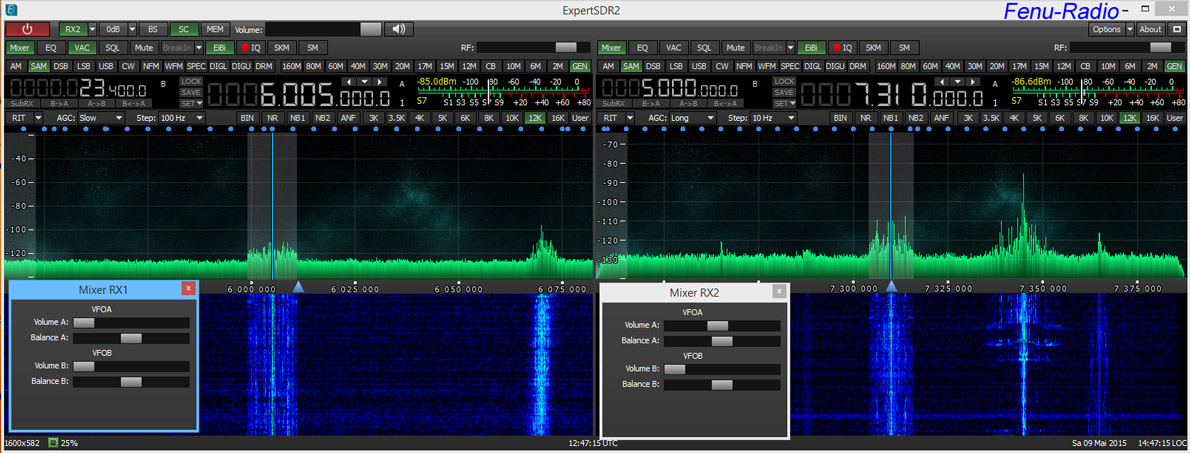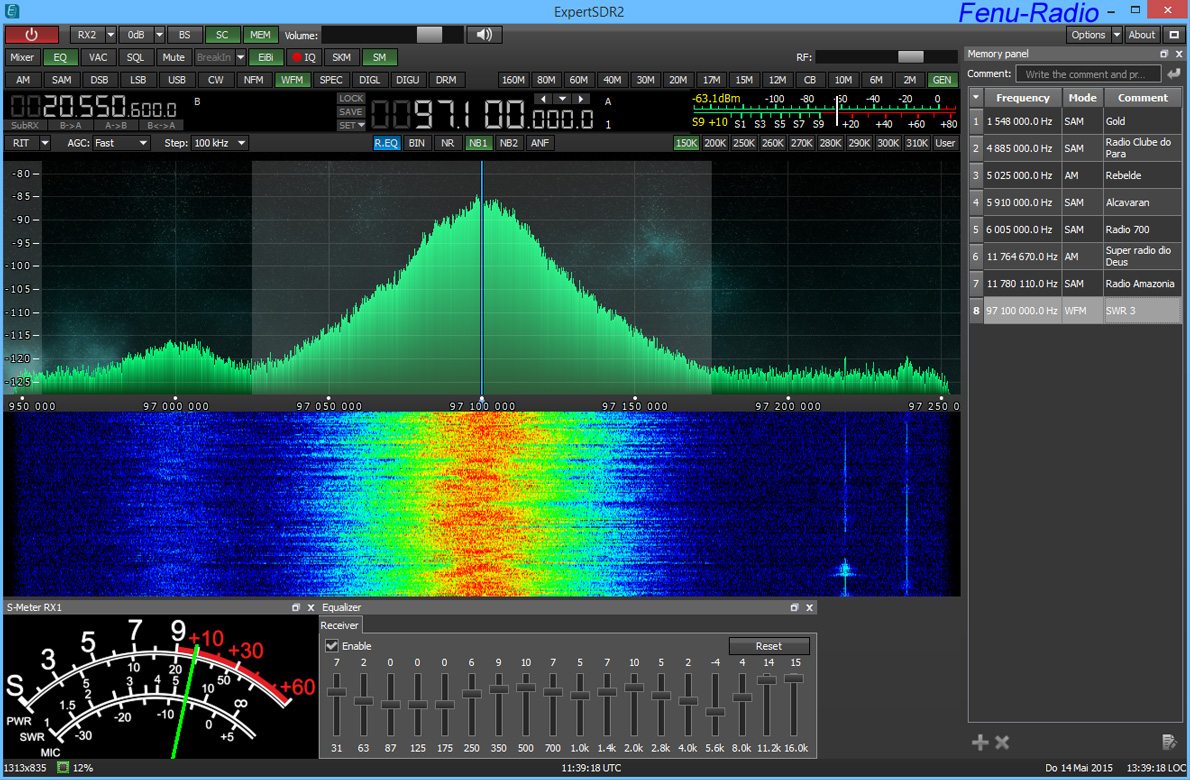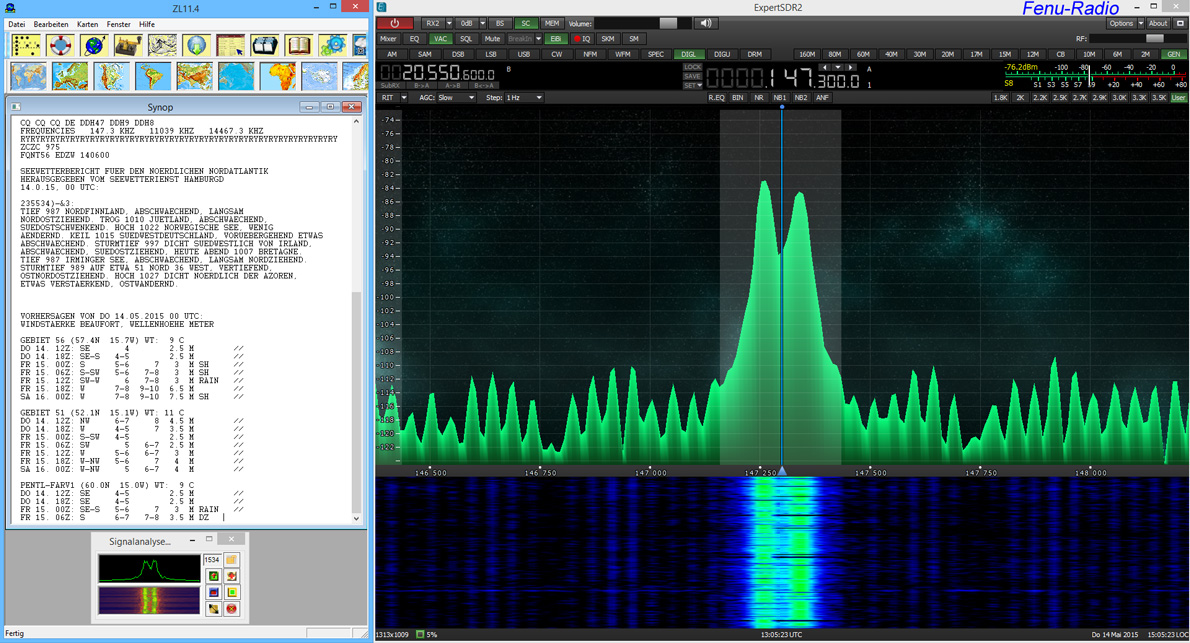|
Since 2009, the small Russian company Expert Electronics has developed and produced digital amateurradios. The main product of this company has been the SunSDR radio. The SunSDR-MB1, a standalone -SDR, has already caused some stir in the ham radio scene. Lately, Expert Electronics has produced a SDR-Receiver: the ColibriDDC SDR.
Blockdiagramm
Vasily Vasilev from Expert Electronics made the Colibri available for three months to conduct tests and make comparisons. To test the radio with a wide variety of antennas, I used:
For comparisons I had the tried-and-tested Perseus receiver. I conducted my tests and comparisons not only at home, but also outside. In this case the NTi MegActiv and the NTi ML200 were a good choice because they are built for portable and stationary operation. The Colibri SDR can be connected either to the RJ 45 jack of the PC or to a router. When operating I connected the radio to a Netgear-Router with its faster data transmission and ease of use via the local PC-network. The Software The installation of the ExpertSDR2 software went fast and without any problems. A double-click on the appropriate icon starts the software but not the receiver. Only after a hopeful click on the ON/OFF button in the upper left corner, the Colibri started with an audible click. Wonderful! The software recognized the receiver right away without having to do complicated network configurations. The ExpertSD2-software makes a good first impression. It is not cluttered and neatly arranged. The spectrum and the waterfall are well designed. The colors can be user-defined, you can even insert your own picture as a spectrum background. The "dBm"display can be controlled very fast depending on the noise and the signal level. The speed of the spectrum and the waterfall can be controlled in the menu. The scalability of the spectrum is a helpful feature. If needed, the spectrum can fill the entire screen. The amateur bands are pre-defined, which is very practical. It would have been even better if these buttons could also select the broadcast bands. Each button keeps the selected mode, bandwidth and zoom factor. The software has two highly effective noiseblankers (NB), which can be configured at will. There is also an automatic notch filter (ANF). Its levels are selectable. The Colibri also features a noise filter (NR), which can also be configured. Last but not least: The AGC! There are six settings, all of which can be user-defined. In case you want to work with decoding programs, you can choose VAC (Virtual Audio Cable) for a connection. For this purpose, the ExpertSDR2 Software offers some settings in the menu. For CW fans, the CW-Skimmer-Server can be addressed directly. Besides equalizer, binaural-audio, audio mixer for the RX-channels, 2VFOs, Eibi-list, alpha-numeric memories , there are a couple more features that could be mentioned. But that is beyond the scope of this article. Receiving qualities After some getting-used to, I started with 23.4KHz. With the MegActiv, the Germany navy station DH038 could be received very well. In comparison with the Perseus, the were no differences in signal strength. But the sound was sort of 'quieter'. The ExpertSDR2 software has a little less noise than the Perseus software. Even with the Clifton Labs. Z1501F, which produces high signal levels in the VLF range, there were no problems. Also on 147.3 KHz, the German DWD (Weather Service), no differences in reception could be detected. On all antennas, reception in the long wave range was very good as well. The CrossLoop , which can be rotated to receive signals from different directions, could show its advantages. Perfect reception of weak stations! But something strange could be noticed, when I used the Clifton Labs. Z1501F. The entire spectrum was sort of fidgeting. When I switched to the Perseus, the spectrum was quiet. It seemed as though the Z1501F produced too a high signal level for the Colibri. This phenomenon could not be noticed with other antennas. As regards the medium wave, there was no difference to be noticed to the Perseus. You can only judge the reception qualities of a radio when you try to receive even the weakest signals. Not only is the sensitivity of importance, but also the audibility of a signal. There was a small difference between the two receivers. The ExpertSDR 2 software renders the signals a little crispier. With the selectable 18-band equalizer you could custom- tailor the audio. That increased the audibility a tiny bit more. Up to the 10-meter band, the Colibri is on par with the Perseus. Only the somewhat higher sensibility of the Colibri on the higher frequencies makes this radio a little better than the Perseus. Because the Colibri makes reception up to 8oo MHz possible, I listened in on the FM-band and used the Dressler ARA 500. Reception was rather good, but image frequencies from the shortwave bands occurred. Because of the lack of preselectors, reception above the FM-band was full of image frequencies and was not possible at all. Fullscreen mode with 312 spectrum width Possible spectrum widths: 39KHz, 78 KHz, 156 KHz and 312 KHz↓
Fullscreen mode with 312 spectrum width with the wideband spectrum 0-62MHz displayed. A click on the wide band spectrum immediately goes to the desired frequency. The marked bands in the WB spectrum are to be seen.↓
Smallest possible adjustment without spectrum. The spectrum can be scaled continuously.↓
Comparison between ExpertSD2 and Perseus. ↓
DRM reception works well with DREAM.↓
In this picture, you can see the software of the second receiver. Both receivers can be controlled independently. Because of the mixer function, there is the possibility of listening to the audio of both receivers simultaneously or Rx1 on the left headphone channel and Rx 2 on the right channel. This is a great tool for comparisons. Both receivers have two VFOs additionally.↓
In the lower picture, you can see FM-reception of the SWR3 radio station with the memory channel displayed. Here you can store and label frequencies. The S-meter and the 18-Band equalizer can also be seen. ↓
RTTY reception from DWD on 147.3Khz with ZornsLemma. ↓
Conclusion: The Colibri SDR is a high-quality receiver in mini size! The reception leaves nothing to be desired. The software ExpertSDR2 is very neatly arranged and easy to be operated despite the numerous adjustment options. But you do need a manual, nonetheless, to be able to understand all its functions and possibilities. Unfortunately, the Colibri has no preselector, only a low pass filter at 55Mhz. This can result in overload, which happened when the E-field Clifton labs Z1501F antenna was used. This high power antenna could only be used during the day and even then the noise level increased considerably. With the other antennas, no such overloads were noticed. The efforts of Expert Electronics to correct software bugs as quickly as possible are very laudable. When I reported a bug in DRM reception and in the memories, barely a week went by before they got rid of the mistakes. posted at 14.05.2014
|

.jpg)
001.jpg)
001.jpg)
.jpg)

.jpg)
